
One of the most attractive handicrafts and beautiful arts that is popular in Iran is carpet weaving. mat weaving art has been popular since the distant past in most African countries and Asian countries such as Iran, Indonesia, Thailand, etc. This attractive and popular art is mainly popular in the north and south of Iran in the form of home activities.
There are many men and women who are engaged in mat weaving to provide their daily expenses or to fill their free time! With the help of mats, you can produce various wicker products such as wicker baskets, baskets, curtains, etc.
What is mat weaving art?
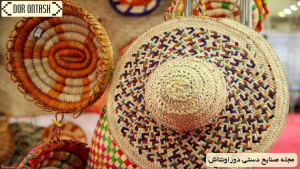 mat weaving meaning is the process of twisting, weaving and twisting plant threads in different shapes in a simple and patterned way with the help of hands and feet. Due to the fact that the raw materials of weaving mats are found in abundance in the north and south of Iran and this art is in harmony with the climatic conditions of these two regions, the prevalence of mat weaving in these areas is more than in other parts of Iran.
mat weaving meaning is the process of twisting, weaving and twisting plant threads in different shapes in a simple and patterned way with the help of hands and feet. Due to the fact that the raw materials of weaving mats are found in abundance in the north and south of Iran and this art is in harmony with the climatic conditions of these two regions, the prevalence of mat weaving in these areas is more than in other parts of Iran.
This type of handicraft has attracted many people due to its abundant and cheap raw materials. Woven mat products are found as decorative accessories in many urban homes these days. Also, foreign tourists show great interest in buying these products.
The art of mat weaving is actually twisting and weaving plant threads together. These braids may be simple or patterned and done with the help of hands or feet.
What is produced from mat weaving?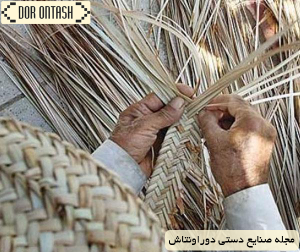
A wide variety of products are produced from woven mats, including baskets, baskets, hats, carpets, mats, curtains, and many different dishes.
Where is mat weaving produced in Iran?
mat weaving is produced in the southern and northern regions of Iran because their raw materials are easily available, and the production of this product and handicraft is very popular in these regions.
One of the reasons why wicker weaving is popular in these areas is the cheapness of raw materials and the availability of raw materials. Today, some of these products are used as functional and decorative objects in urban life.
Wooden braids are seen flat and with volume. Creating a role and its variety depends on the threads and how to pass them under, the color of mat weaving products depends on the natural color of their raw materials, although in some cases, some threads are dyed and used.
Different types of mat weaving
According to the primary material used for weaving and the weaving method, mat weaving can be divided into the following categories:
- mat weaving
- Bamboo weaving
- pearl weaving
- Cupobuffy
Another weaving arts and crafts is the art of mat weaving. If we want to weaving art examples, we can mention basket weaving, mat vases, mat rugs, and mat furniture.
Classification of works produced in mat weaving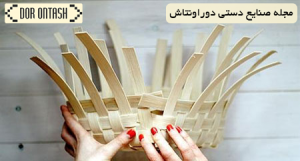
According to the raw materials used in wicker products, their production process can have different names. For example, kapo weaving, pearl weaving and bamboo weaving are among these items. People who work in this field are well aware of the properties of each of these subcategories of woven mats and what products can be produced with their help.
What is cupobuffy and what is its use?
Kapu is one of the common handicrafts in the south of Iran and especially in the outskirts of Dezful city, and its primary material is palm leaves. Many Iranian and foreign travelers want to buy this product from traditional markets. This beautiful art can be found in the homes of many of us Iranians. For example, most Iranian women have one or two kapu for their pots in their kitchen. With more than 300 weavers, dorontash handicrafts has the largest production volume of kapoh in Iran.
History of mat weaving in Iran
One of the oldest handicrafts that has been popular in Iran is mat weaving. Archaeologists have found examples of this art in Mesopotamia and southern regions, and it has been proven that the first sub-scales used by the human race were reeds and swamp plants.
Of course, this is not the whole story! It is probably interesting for you to know that the city of Dezful is called the cradle of Kepu in Iran and it has also been registered as the city of Kepu.
mat weaving art materials
One of the most important mat weaving tools and equipment; Scissors, knives, lids, needles and water containers (for soaking the threads).
The use of some of these tools used are:
scissor
Scissors in mat weaving have narrow edges that are used to cut wood.
his door
It is used when you want to add extra cracks to the texture. The sharp end will break the splinters, but you can use it to make holes in plywood.
Knife
In mat weaving, a knife is used to cut very thick fibers and leaves.
Metric and tape ruler
A ruler and a meter are used to accurately measure the work.
glue
It is used to glue the extra parts of the wood in the work and strengthen them.
Gas or alcohol lamp
They use an alcohol lamp to burn the excess hairs. Some stems and fibers of plants have many hairs that if they are not burned, grab one end of it and it will go to the end and the fibers will be damaged.
cardboard
When you want to weave a device with a square bottom, draw the designer on the cardboard and then place the pieces on the design.
A lid with a wide tip
For when you want to open the texture if necessary.
Different tools and material can be used for mat weaving, but the most common tools are
mat weaving tool |
Application of mat weaving |
| All kinds of knives and scissors | Cutting pieces of wood and plants |
| his door | Drilling, chipping or breaking wood |
| Metric and tape ruler | To measure wood |
| glue | Gluing and fixing the pieces of wood |
| water bowl | Soaking wood fibers |
| Gas or alcohol lamp | Burning the lint |
| cardboard | To draw the initial design and molding |
What is the production method of mat weaving?
To make a mat, or so called mat weaving, the artist must go through several steps after choosing the raw materials (straw, palm leaves, willow tree branches, pomegranate tree branches, etc.), which are generally done according to the regional geography. . Since wicker weaving is generally done with straw and palm leaves, in this article, we explain how to weave mats in both ways.

The reed branches in different lengths and diameters are picked from the marshes or the banks of the rivers using a sickle and the excess foliage is cut. Then, along the length of each reed, a slit is made using a knife or sickle. The straws are placed on top of each other in one place and then by hitting them and knocking them so to speak, the straws crack and crumble. By doing this, thin strips or strips of straw are created, and by weaving these strips, wicker weaving is done. This model of wicker weaving is mostly used to make underlay.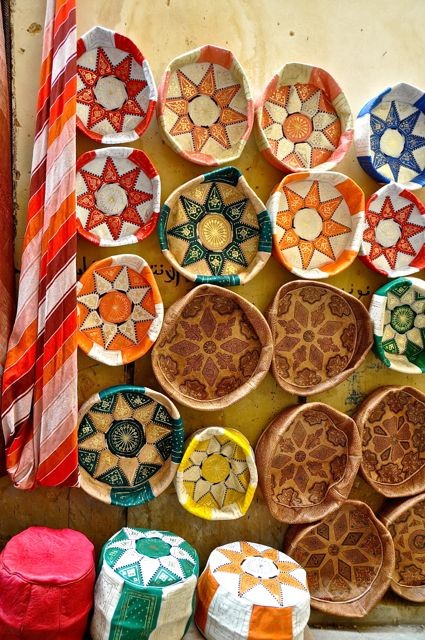
To use the leaves of date trees, they are first cut from the tree and then the leaves are separated from each other or filled. Then these leaves are placed in water until their color turns yellow. To speed up this step, sometimes boiling water is also used. The yellow leaves or palm tree strips are now ready to be woven and made into wicker containers.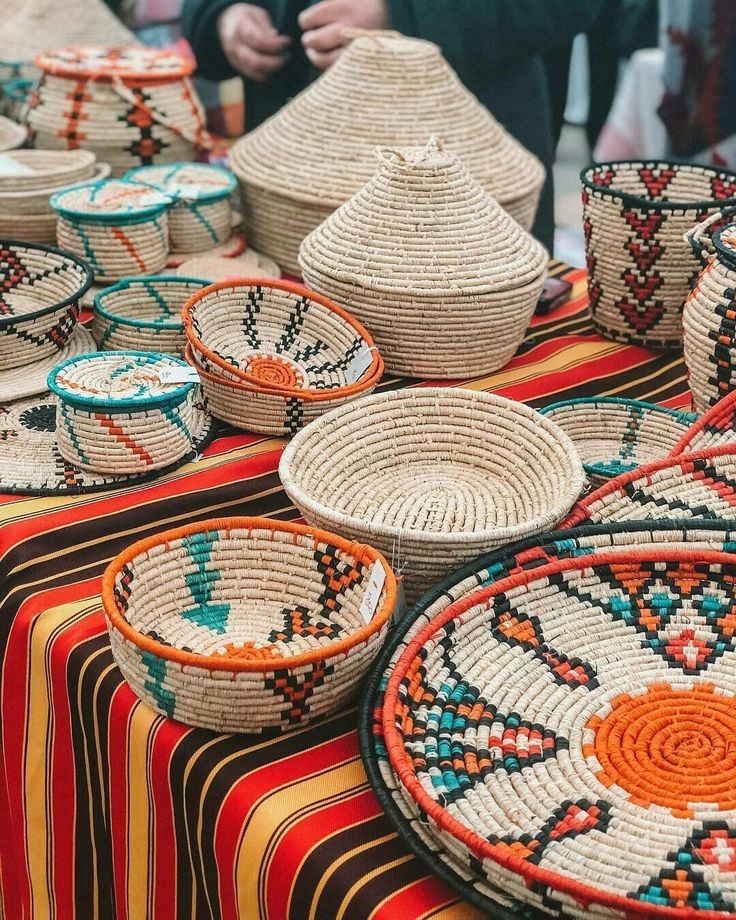
To show their taste, artists sometimes use natural, chemical or thread colors to make the woven mat look better. Colored ink, or baqm, is applied to the mat as a natural color. This natural substance is available in green, purple, blue, and orange colors, and to achieve darker or brighter colors, some turmeric is added or added to it. Generally, the designs used in mat weaving are abstract and simple designs and are created by weaving mat strips. This means that the artists did not use pen and paint to color the mats, but by weaving different colors of the mats together, they create their desired design.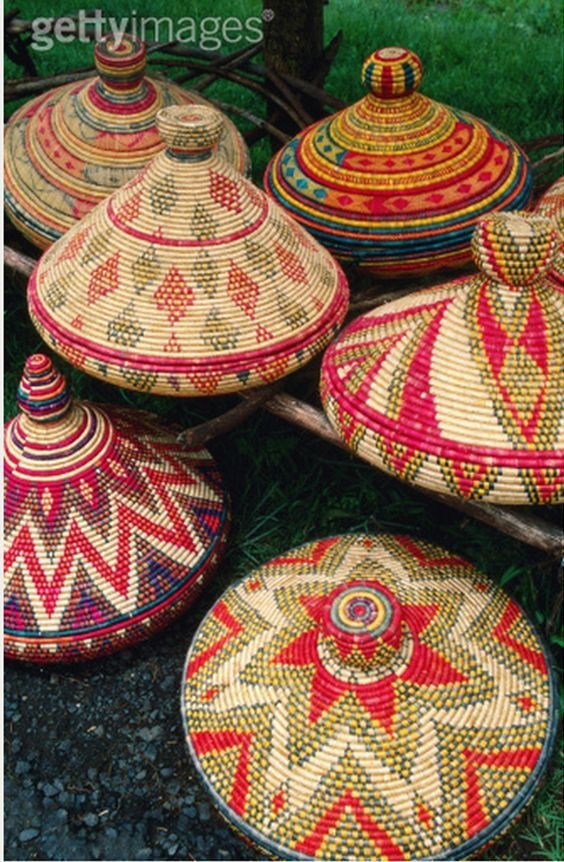
To weave woven mats, the mats are placed on top of each other in the form of warp and weft, and the skeins are woven together, one side and the other side. For a part of the container that is flat, the perpendicular strands are woven together (similar to knitting yarn). Mat weavers use different methods for the parts of the dish that have edges and the dish is not smooth. In one method, the mats are twisted diagonally to each other, and in other methods, they use new and circular threads to shape that part of the work.
mat weaving design
In the past, traditional mats used to decorate most of the windows and balconies of the old houses and prevent the strong light and heat of the sun from entering the houses, and even attract many insects to the houses, but with the modernization of urban life, mat weavers And mat shops became less prosperous in the cities, and today in big cities like Tehran, a handful of such shops can be found.
Job creation for mat weavers occurs only if their product is in demand for sale, and this increase in demand is possible only with the export of mats.
Making mats by hand in different regions of Iran differs from each other depending on the type of raw materials available. For example, in the southern part of Iran, date palm fibers are used, and in the northern part of Iran, rice and wheat stalks are used. On the other hand, the type of use of the production equipment is different in terms of shape and size depending on the needs of the people of that area. In Isfahan province, mat weaving is done in desert and dry areas such as Khor, Biabank, and Nayin, and the raw materials used are date palm fibers; But in Najafabad city, soft branches of one-year or two-year-old trees are used to weave wicker baskets. The baskets made in Najaf Abad are called Lode and they are used to carry garden products and fruits. In Qasr Shirin, the young branches of the palm tree are used for weaving mat, which is called “Fasil”.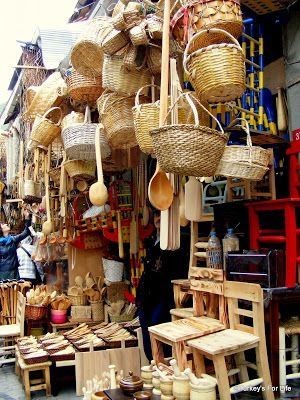
Wicker is known in the global customs with the tariff code (HS Code) number 4601 .
- It should be noted that not all products can be examined in detail and for this reason, we analyze and examine a group of products that are related to the product you are looking for in order to determine the market potential of the selected product in different regions. Let’s know the world.
- All the following reports are based on what was declared and registered in customs until the end of 2018.
- The effort is to get to know the business environment of your desired product better by reading these reports and to provide stronger conclusions for your business with more knowledge.
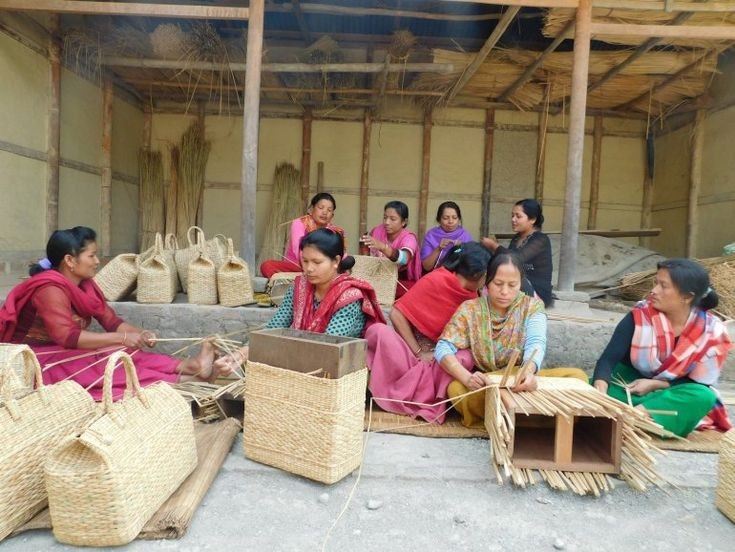 Global market situation
Global market situation
Mat export statistics
The goal is to identify competitors in the global market.
 Total export figure: 613,993,000 dollars
Total export figure: 613,993,000 dollars
 The five-year growth rate of the value of each unit: -3 percent
The five-year growth rate of the value of each unit: -3 percent
 One-year growth rate of the value of each unit: 14 percent
One-year growth rate of the value of each unit: 14 percent
 Average distance from importing country: 5,228 KM
Average distance from importing country: 5,228 KM
Mat import statistics
The goal is to know the applicants and potentials in the global market.
![]() Total import figure: 412,971,000 dollars
Total import figure: 412,971,000 dollars
![]() The five-year growth rate of the value of each unit: -5 percent
The five-year growth rate of the value of each unit: -5 percent
![]() One-year growth rate of the value of each unit: 7 percent
One-year growth rate of the value of each unit: 7 percent
![]() Average distance from the exporting country: 4,834 KM
Average distance from the exporting country: 4,834 KM
Export chart
The bar graph below shows the rank and volume of exports of the countries of the world.
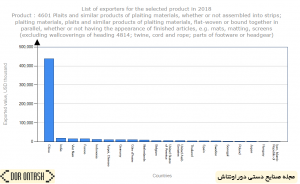
If you are interested in making rattan products, you can buy all kinds of these products with great variety and reasonable prices from dorontash store.
Another traditional woven handicraft product is the pesrian kilim bags, which is produced using hand-woven carpet. If you are interested in knowing the art of carpet weaving, follow the The art of iran kilim weaving article.


